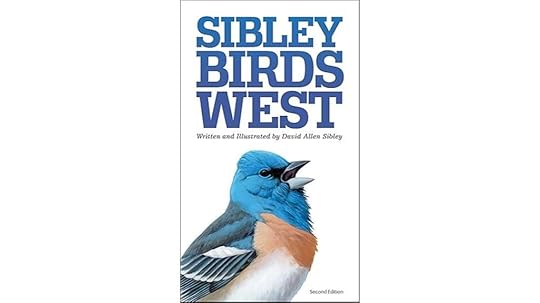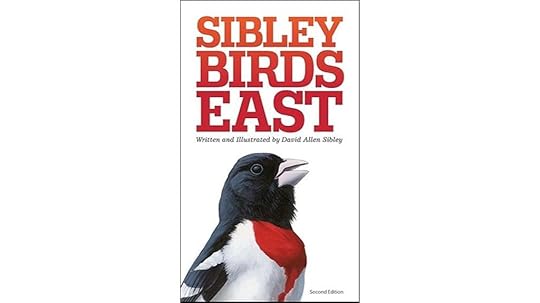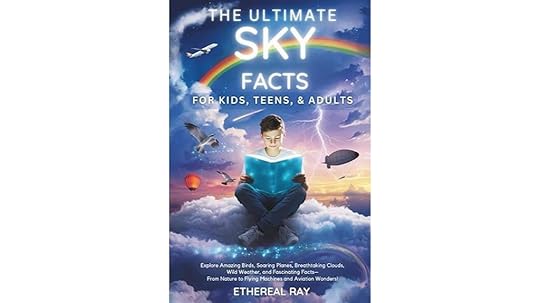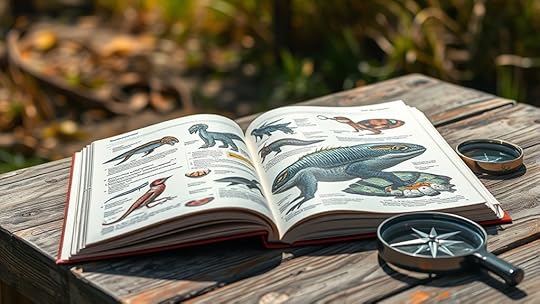4 Best Loose-Leaf Field Guides to North American Monsters You Need to See
If you’re searching for the best loose-leaf guides on North American monsters, I recommend ones that offer accurate regional coverage, vivid illustrations, and easy-to-navigate layouts. These guides should include detailed descriptions of well-known and lesser-known creatures, along with maps and visual cues for quick identification. Durability and suitability for all experience levels are also key. Keep exploring further, and you’ll find the perfect resources to deepen your monster knowledge.
Key TakeawaysFocus on guides with accurate, region-specific monster descriptions validated by experts or reputable sources.Look for detailed, realistic illustrations showing different angles and habitats for easy identification.Choose guides with logical, user-friendly layouts, including quick-reference tabs and organized regional sections.Ensure the guides are durable, portable, and suitable for various age groups or experience levels.Prefer resources that incorporate supplementary digital tools like maps, audio, or online databases for enhanced field use.Sibley Birds West Field Guide
If you’re a birder in Western North America looking for a highly reliable and portable guide, the Sibley Birds West Field Guide is an excellent choice. I found it invaluable during my bird surveys in the Chihuahuan Desert. Its concise, focused descriptions highlight key diagnostic traits, making identification easier. The reference pages group species by genus, which simplifies recognition across diverse habitats. The detailed illustrations and habitat info help even with display flights like the Black-chinned Hummer. Its compact size, light weight, and quality print make it perfect for field use. Whether you’re a beginner or an expert, this guide offers reliable, quick access to Western North American bird species.
Best For: birders seeking a portable, highly reliable field guide focused on Western North American species, suitable for beginners and experienced enthusiasts alike.
Pros:
Concise, highly informative descriptions with diagnostic traits that facilitate quick identificationExceptional artwork depicting male, female, juvenile, and seasonal plumage, along with habitat and behavioral detailsCompact, lightweight design with quality print, making it ideal for field use and travelCons:
Some rare species like Great Kiskadee and Ringed Kingfisher are not included in the Western regional versionMaps focus mainly on eastern North America, which may be less detailed for specific western regionsUses imperial measurements, which may require conversion for metric usersCheck PriceSibley Field Guide to Birds of Eastern North America (Second Edition)
The Sibley Field Guide to Birds of Eastern North America (Second Edition) stands out as an essential tool for both novice and experienced birders seeking detailed, reliable identification. Its exhaustive info, vivid illustrations, and regional maps make it invaluable in the field. The guide’s compact size fits easily into backpacks, perfect for on-the-go birdwatching. I appreciate the high-quality artwork showing multiple plumages, plus maps explaining migration and habitats. While some find the small print challenging, its sturdy design and clear organization make it a top choice for trips, especially in New England. Overall, it’s a trusted resource that elevates any birding adventure.
Best For: birders of all experience levels seeking a comprehensive, portable guide to identify and learn about eastern North American birds, especially during field excursions.
Pros:
Highly detailed illustrations and multiple plumage options enhance identification accuracy.Compact, sturdy design makes it ideal for travel and outdoor use.Clear organization and regional maps support quick reference and learning.Cons:
Small print may be difficult to read for users with visual impairments.Some users find the text boldness and size less suitable for prolonged use.Price may be higher compared to other regional bird guides.Check PriceThe Ultimate Sky Facts for Kids, Teens, & Adults
Designed for curious minds of all ages, “The Ultimate Sky Facts for Kids, Teens, & Adults” offers an engaging mix of fascinating facts, colorful visuals, and hands-on activities that make learning about the sky both fun and accessible. I love how it explores everything from cloud formation to space wonders, making complex ideas easy to understand. The activities, like cloud-making and sky scavenger hunts, turn learning into adventure. Whether you’re a parent, teacher, or just a sky enthusiast, this guide sparks curiosity and encourages outdoor exploration. It’s perfect for inspiring a lifelong fascination with the universe above, all while having fun along the way.
Best For: curious minds of all ages interested in exploring sky phenomena, from children and families to educators and outdoor enthusiasts.
Pros:
Engaging and accessible explanations that make complex sky topics easy to understandRich visuals and hands-on activities that foster active learning and outdoor explorationSuitable for a wide age range, inspiring curiosity and lifelong interest in the skyCons:
Some readers suggest including more diagrams for complex scientific conceptsThe book may be less detailed for advanced sky enthusiasts seeking in-depth scientific informationThe focus on broad topics might limit depth in specialized areas like astrophysicsCheck PriceMidwest Foraging for Beginners: Field Guide to Wild Edibles
For those just starting out in Midwest foraging, *Midwest Foraging for Beginners* offers a user-friendly introduction that emphasizes practical identification and seasonal guides. It’s designed to help families and casual enthusiasts feel confident exploring local wild edibles without needing a survivalist background. The guide includes clear photos, recipes, and tips for harvesting safely, making foraging approachable. However, some content accuracy issues, like misidentified plants and inconsistent foraging calendars, warrant caution. While it’s engaging and helpful for beginners, I recommend supplementing this guide with verified sources to *guarantee* safety and correct identification, especially given regional plant variations.
Best For: beginner foragers in the Midwest seeking an approachable, family-friendly guide to identifying and harvesting local wild edibles safely.
Pros:
Clear photos and practical tips make identification accessible for novicesSeasonal guides and recipes enhance hands-on learning and culinary explorationEncourages confidence and connection with the local environmentCons:
Potential inaccuracies due to unverified sources and plant misidentification issuesInconsistent foraging calendar, missing key regional plants like rampsSome repetitive content or filler that may detract from core information and clarityCheck PriceFactors to Consider When Choosing Loose‑Leaf Field Guides to North American Monsters
When selecting a loose-leaf guide to North American monsters, I consider how accurate and credible the information is, since reliable details are essential. I also look for clear illustrations and a logical layout that makes finding what I need easy. Finally, I verify the guide covers the regions I’m interested in and is appropriate for my age and experience level.
Content Accuracy and CredibilityHow can you tell if a loose-leaf field guide to North American monsters is trustworthy? First, check if it cites reputable sources or expert authors, which guarantees the information is grounded in research. Cross-referencing descriptions with established folklore, mythological texts, or academic studies adds credibility. Be cautious of guides that include unverifiable or sensational claims without supporting evidence, as they can mislead you. A reliable guide clearly distinguishes between myth, legend, and documented sightings, helping you understand what’s backed by facts. Additionally, look for guides that are regularly updated or revised based on new discoveries or scholarly consensus. These indicators help ensure you’re getting accurate, credible information to deepen your understanding of North American monsters.
Visual Detail and IllustrationsEver wondered what makes a field guide’s illustrations truly useful in identifying North American monsters? The key is detailed, accurate visuals that showcase different forms, behaviors, and features clearly. Good illustrations include multiple angles and context scenes, helping you recognize monsters in various environments or situations. Highlighting diagnostic traits like markings, size comparisons, or behavioral cues allows for quick identification in the field. Visual aids such as maps or diagrams also add value by showing habitat ranges and activity patterns. A well-designed guide balances artistic detail with clarity, ensuring images are realistic yet easy to interpret during rapid assessments. This combination of visual detail and clarity makes all the difference when trying to identify elusive or unfamiliar monsters quickly and confidently.
Regional Coverage ScopeChoosing the right loose-leaf field guide hinges on understanding its regional coverage. A good guide should have detailed information tailored to specific areas, ensuring accurate identification of monsters unique to those regions. If the guide covers a broad geographic scope, it may lack depth in local variations, making localized knowledge essential. Regional coverage also indicates whether the guide discusses legends, mythological creatures, or cryptids specific to areas like the Pacific Northwest, Midwest, or Southeastern forests. Selecting a guide that clearly states which regions or ecosystems are included helps match it to your area of interest. Without comprehensive, region-specific information, there’s a risk of overlooking or misidentifying monsters, so prioritize guides that provide detailed coverage of your local or desired region.
Organization and LayoutWhen selecting a loose-leaf field guide to North American monsters, the organization and layout play crucial roles in how effectively you’ll be able to find the information you need. A well-structured guide should have clear sections, such as creature types, habitats, or regions, making quick referencing easier. Intuitive headings, subheadings, and visual cues help you locate specific monsters or details at a glance. Including a detailed index or quick-reference tabs boosts usability, especially during field observations. Consistent formatting for descriptions, illustrations, and specimen details allows for efficient comparison and identification. A user-friendly layout balances visuals and text, avoiding clutter while providing enough detail to support accurate recognition. Good organization ensures your exploration is smooth and productive.
Age-Appropriate ContentA well-organized guide not only helps you locate information quickly but also guarantees the content is appropriate for the reader’s age. When choosing a loose-leaf field guide, look for simplified language and clear explanations that match the reader’s comprehension level. Engaging visuals, like illustrations or photos, should be easy to interpret without losing accuracy. The content must focus on monsters relevant to the age group, avoiding overly frightening or complex descriptions that could cause distress. It’s important that the guide balances educational facts with entertaining elements to keep interest high and curiosity alive. Additionally, interactive features, such as activities or quizzes tailored to the reader’s developmental stage, can boost learning and make exploring North American monsters both fun and age-appropriate.
Durability and PortabilitySince you’ll likely take your field guide into the outdoors, prioritizing durability and portability is essential. Look for guides with sturdy covers and thick pages that can handle frequent handling and exposure to the elements. A compact, lightweight design—ideally under 500 grams—makes carrying easier without sacrificing readability. Reinforced edges or spiral bindings help prevent wear and tear from rugged use, ensuring your guide stays intact over time. Choose a size that fits comfortably in your bag or pocket, balancing portability with enough detail to identify monsters accurately. Finally, guarantee the binding is durable and secure so pages won’t fall out after repeated flipping or exposure to moisture and dirt. These features keep your guide reliable and easy to use in any outdoor setting.
Supplementary ResourcesSupplementary resources can considerably enhance your understanding of North American monsters beyond what a field guide alone offers. Online databases, academic journals, and expert forums provide in-depth analysis and updated sightings, enriching your knowledge. Audio recordings of monster sounds or sightings help verify and identify creatures, making your research more accurate. Visual aids like documentaries, artwork, and virtual reconstructions bring mythical or cryptid features to life, offering a clearer picture. Historical documents, folklore collections, and cultural references deepen your grasp of regional legends and their origins. Additionally, mobile apps and digital platforms include interactive maps, user reports, and real-time sightings, complementing printed guides. These resources make your monster exploration more exhaustive, engaging, and reliable.
Frequently Asked QuestionsHow Do I Identify Genuine Monster Sightings From Hoaxes?To spot genuine monster sightings from hoaxes, I look for consistency in reports and clear, detailed descriptions. I pay attention to credible witnesses and verify if photos or videos are authentic, often checking for signs of tampering. Skepticism is key—I question sensational claims and seek physical evidence or multiple independent sightings. Trusting reputable sources and using critical thinking helps me distinguish real encounters from hoaxes.
Are Loose-Leaf Guides More Durable Than Hardcover Versions?Yes, I find loose-leaf guides more durable than hardcover versions because I can replace individual pages if they get damaged. Plus, they’re often made with flexible, weather-resistant materials, making them perfect for outdoor adventures. I can easily pack and carry them without worrying about wear and tear. Overall, loose-leaf guides offer longevity and convenience, especially when exploring rugged terrains or unpredictable weather conditions.
Which Regions Are Best Covered by These Monster Guides?I find that these monster guides cover regions like the Pacific Northwest, Great Lakes, and the Appalachian Mountains best. These areas are rich in folklore and sightings, making them perfect for exploration. I recommend focusing on guides that offer detailed maps and regional stories, so you can easily navigate and uncover local legends. Whether you’re hiking or just curious, these guides help you discover North America’s intriguing mythical creatures.
Can These Guides Be Used for Educational Purposes?Absolutely, these guides are great for educational purposes. Did you know that over 60% of people believe in some form of local legends or monsters? I’ve used them in classrooms and outdoor programs to spark curiosity and teach critical thinking about folklore versus reality. They’re perfect for engaging students, hikers, or anyone interested in North American mysteries, making learning about regional history and culture both fun and interactive.
How Often Should I Update My Field Guide Collection?I recommend updating your field guide collection at least once every couple of years. New discoveries and research can alter how we identify and understand monsters, so staying current guarantees you’re accurate. If you’re deeply involved or notice frequent updates in the field, consider updating annually. I find that reviewing my collection regularly helps me stay informed and confident when spotting creatures or phenomena.
ConclusionSo, whether you’re a seasoned cryptid hunter or just curious about North American monsters, these loose-leaf guides are your trusty companions. They make exploring the unknown feel like a true adventure—think of them as your modern-day grimoire, minus the spellbook. With the right guide in hand, you’ll be uncovering mysteries faster than you can say “By Jove!” So go ahead, embrace the thrill of discovery, and let these guides lead you into the wild unknown.



